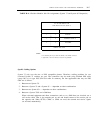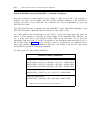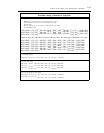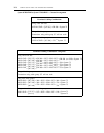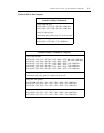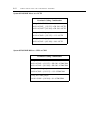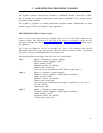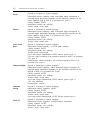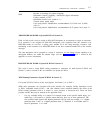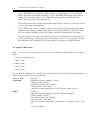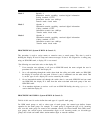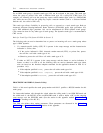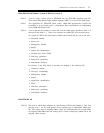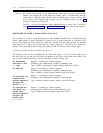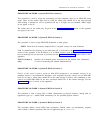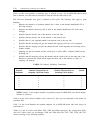
ADMINISTRATIVE PROCEDURE SUMMARY
C-3
X.25
Opcode: 4 (assuming no codeset mapping)
Information transfer capability: unrestricted digital information
Coding standard: CCITT
Information transfer rate: coded to a 0
Transfer mode: packet mode
Layer and protocol identification: recommendation X.25 link level (LAPD)
(layer 2)
Layer and protocol identification: recommendation X.25 packet level (layer 3)
PROCEDURE 000 WORD 4 (System 85 R2V4 & Generic 2)
Field 4 of this word is used to assign an NPA-NXX designator to an extension or range of extensions.
If an extension is not assigned an NPA-NXX designator, calls originated from this extension over
ISDN-PRI trunks do not have a calling party number IE in the setup messages. Likewise, calls
terminating to this extension over ISDN-PRI trunks do not have connected number IEs in the connect
messages.
The same designator can be assigned to a range of extensions via one change execute operation if no
unassigned numbers are within the entered range (see the Procedure 354 Word 3 section in this
appendix for more information).
PROCEDURE 010 WORD 4 (System 85 R2V4 & Generic 2)
This word is used to assign ISDN routing parameters to extensions for both System 85 R2V4 and
Generic 2, and to associate a BC for extensions for System 85 R2V4.
ISDN Routing Parameters (System 85 R2V4 & Generic 2)
For System 85 R2V4, field 4 of this word applies; for Generic 2, it is field 3.
While many parameters are associated with route selection (for example, Facility Restriction Levels
or FRLs, compatible match of BCs , and clear channel versus restricted channel), the effect of the
ISDN routing parameter field as it relates to route selection is discussed next. There are three
possible encodes that may be entered in the applicable field:
0 Use any available facility in a pattern. For example, based on the specific dialed digits, you
could have a call routed to a specific pattern that may have one or more preferences. The
first available trunk found in the highest preference will be used (for example, 1 is a higher
preference than 2 and 2 is a higher preference than 3). Therefore, if an available trunk is
found in preference 1, it is used.



